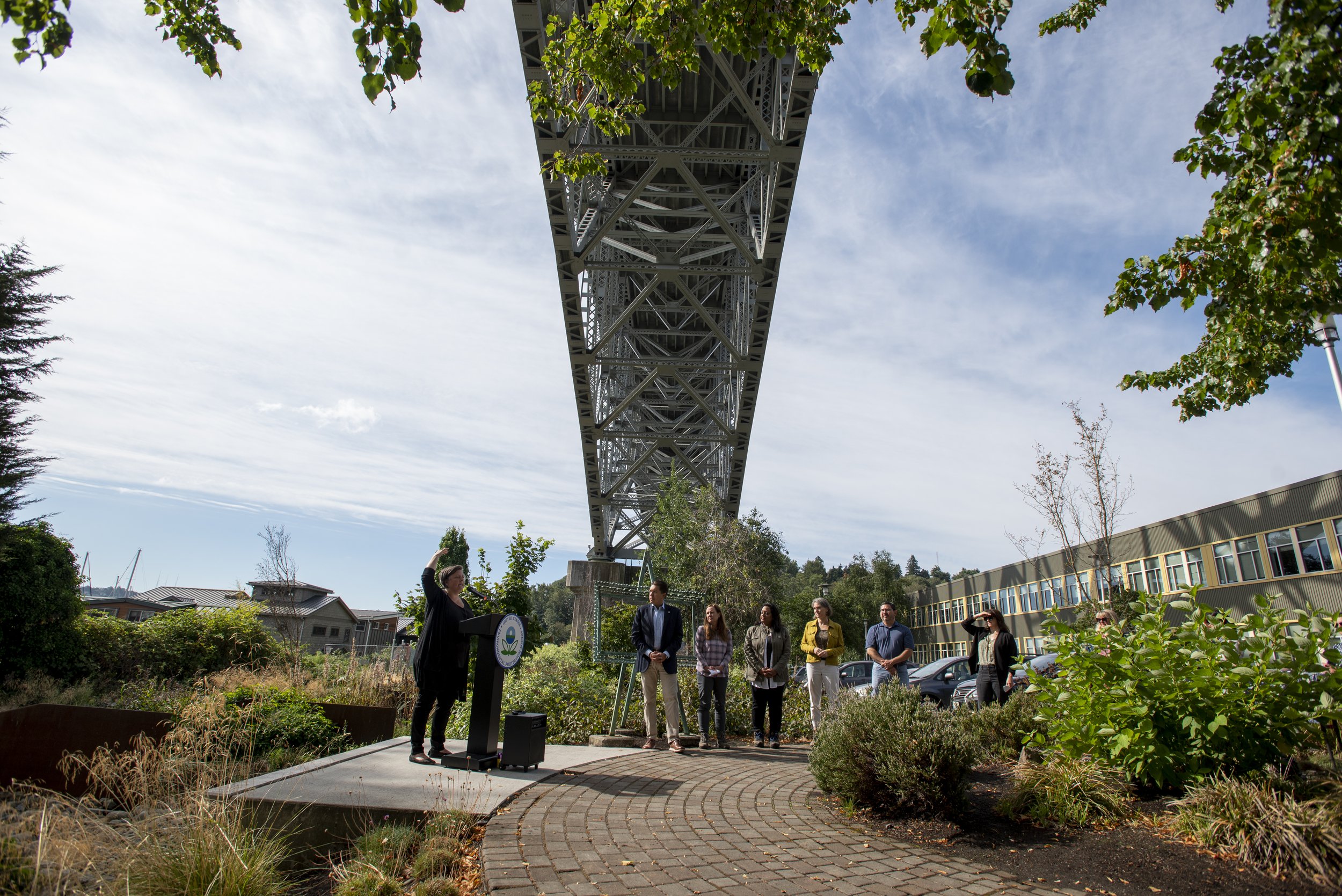Protecting Our Iconic Salmon
Even if you don’t eat them, salmon provide critical connection and enormous value to our lands, waters, and oceans. The Nature Conservancy works to protect native salmon, from the beginning of their complex life cycle to the end, by restoring vital habitat, improving water quality, and mitigating climate change.
Learn ABOUT THE ECOSYSTEMS ESSENTIAL TO SALMON SURVIVAL, THEN SCROLL BELOW TO SEE HOW OUR work protects THEM throughout their life cycle!


In coastal rainforests and interior dry forests, we’re protecting and restoring streams through active management and removal of unnecessary roads. We’re also installing log jams to improve habitat for young salmon.

We’ve helped restore natural processes along 10 miles of rivers, including the Puyallup and Skagit Rivers. We’ve also protected 12,500 acres along the Hoh and Clearwater Rivers, connecting a salmon migration corridor from the Olympic National Park to the Pacific Ocean.

In Port Susan Bay, we have protected and are working to ensure resilience of more than 4,000 acres of tidal estuarine marsh, mudflat, and eelgrass ecosystems. We are restoring 150 acres of marsh habitat, giving young salmon smolts a better chance of surviving their migration from Puget Sound.

We’re partnering to promote sustainable fishing that supports healthy salmon populations, not only to benefit Washington’s seafood industry but also to ensure mature salmon return to advance the next generation and, as they die, provide nutrients that feed flora and fauna throughout the forest.
The way of connection is revealed by water—snowy summits melting, forging rivers, winding streams and cutting wetlands to spill over a salty edge. Join Dr. Emily Howe, Ecologist of Aquatic Environments for TNC Washington, as she poetically details the interconnectedness of a watershed.
The 2023 Legislative Session in Olympia saw some major achievements for nature and people: investments in improving air quality, natural climate solutions, curbing greenhouse gas emissions, and better long-term resiliency planning. A big thanks to our staff who dedicated their efforts to our priorities.
It has been 50 years since the Clean Water Act was passed and while substantial progress has been made for the health of waterways, people, and the planet there is still more work to do. Green infrastructure such as bioswales and rain gardens are one tool that can help the Puget Sound region support people and Salmon.
We are thankful to have many environmental advocates in the Washington state Legislature, but with limited time, we’re calling on leadership to ensure climate, wildlife, and our lands aren’t sidelined as we make it over the finish line.
Investments that recognize the role farmers have in restoring our lands will provide an all encompassing approach to reaching our climate and habitat goals.
From riparian restoration projects, fish passage barrier removal and watershed health, to program assessments and green infrastructure projects, proposed investments for salmon health are broad in their impact, and deserve support in the Legislature.
This year, the Washington state Legislature has the opportunity to pass funding to build green stormwater infrastructure under the I-5 Ship Canal Bridge in downtown Seattle, the busiest freeway corridor in the state.
Read about two major ways the Legislature can help salmon recovery efforts this year, and how you can help make it happen!
Our Director of Strategic Partnerships, Bob Carey, shares a moment of solitude and deep appreciation for salmon on the upper Skagit River.
The US Senate passed a major infrastructure package today, setting the stage for game-changing investments in habitat restoration, healthy watersheds, salmon recovery, forest resilience, and much more.
The Washington Department of Fish and Wildlife (WDFW) opened 250 acres at Leque Island to the tide by breaching a dike and restoring an estuary for young salmon and crab at the Leque Island unit of the Skagit Wildlife Area.
We are thrilled to announce a $1.5 million-dollar grant awarded from the National Oceanic and Atmospheric Administration (NOAA) that will support Chinook salmon, steelhead, orcas and other listed species in the Whidbey Basin.
In a migration of a different sort, Puget Sound leaders make an annual trek to Washington, DC to speak up for our favorite estuary with Congress.
The loss of another orca is a stark reminder of how sick our Puget Sound really is and the importance of river health, salmon recovery, climate change and the impacts of a fast-growing Puget Sound.

































